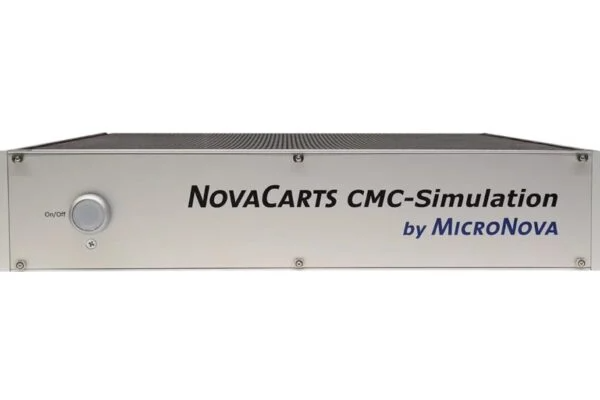Software and systems house MicroNova is expanding its NovaCarts Cell Module Controller (CMC) simulator to support the latest high-precision battery cell monitors and balancers from Texas Instruments. Developers of battery management systems for the automotive industry can now test their designs more easily and quickly.
The BQ79718-Q1 from Texas Instruments serves as a monitoring, balancing and protection device for battery modules in BMS for high-voltage batteries, such as those used as traction batteries for electric vehicles.
By simulating the CMCs, changeover times as well as downtimes on hardware-in-the-loop (HiL) simulators and thus the corresponding costs can be reduced to a minimum. The NovaCarts CMC simulator has a daisy-chain communication interface to the bridge device on the master board of the BMS or the master control unit (MCU). This design ensures precise timing as well as powerful simulation: the CMC Simulator is capable of simulating up to 35 CMC chips simultaneously. Developers and test engineers for BMS systems can additionally link several CMC simulators to simulate batteries with a very high number of cells.
“TI’s BQ79718-Q1 Battery Cell Monitor and Balancer enables automakers to maximise the actual range of their electric vehicles with precise battery cell voltage measurements. Together with the NovaCarts CMC simulator, this is an effective and efficient way for engineers to develop a prototype BMS and get to market faster,” commented Sam Wong, vice president and general manager for Battery Management Solutions at TI.
Reducing complexity and cost
CMCs, as part of the BMS in high-voltage storage systems of electric vehicles and stationary energy storage systems, enable safe and high-performance operation of the batteries used. For this purpose, they continuously monitor the cell voltage and temperature of the individual cells. The NovaCarts CMC simulator simplifies and accelerates BMS tests and facilitates their development. The MicroNova solution thus forms the ideal extension of HiL simulators for battery management systems.
“Building a HiL system with real CMCs is complex because the real cell voltages of the battery and the temperature sensors have to be simulated. When emulating high-voltage batteries, high total voltages arise in the HiL. This increases the complexity and consequently the costs. The simulation of the CMC chips counteracts this,” explains Detlef Naundorf, Product Manager at MicroNova.



Leave a comment